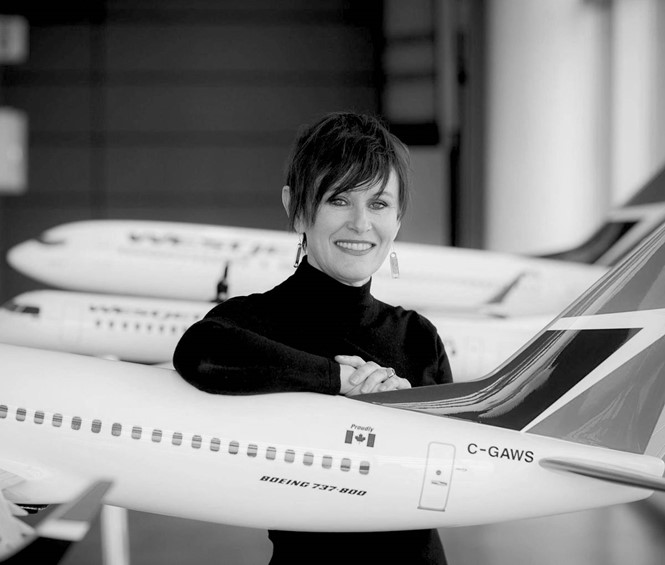Five minutes with Pam August

Renowned low-cost Canadian airline WestJet, has recently undergone a rebrand, focusing on its shift into a global brand. Pam August, director of culture activation at WestJet, talks to Communicate magazine about the rebrand and the strong communication scheme within the brand.
Why did the rebrand happen now?
The world of aviation has changed and in Canada in particular – the geography is so vast, but the population is so sparse – that domestically we can only grow to a certain point. So, we have to go to the global market. To do so, we have to be able to appeal to a different kind of guest. And so, truthfully, the rebrand comes from a place of aspiration, as well as a space of necessity. Another change that we’re making, is the advent of the ultra-low-cost carriers coming to Canada. Brands like EasyJet and Ryanair are very common in Europe. However, we haven’t had that kind of competitive player in Canada until now. For that, we created a spin off airline called Swoop. Swoop will get Canadians out of cars and trains and buses and into the sky so that we can increase our value proposition to the global traveller and business traveller and extend the reach further beyond our borders.
What does the transition into a global brand practically mean?
What you are known for is the brand promise you make the world. Culture is the way you do things to deliver on that promise. That’s how I differentiate them. The brand promise that we are making to the world is ‘love where you’re going.’ For many people, air travel is a necessary evil that they have to endure in order to get to the places, whereas the human element and our culture of care is something that makes the journey a more human and unique experience. It’s also part of what we want to do internally. If WestJet-ers love the journey, then that will translate into human touch for our guests.
Can you explain the culture-focused business model of WestJet?
Culture is not a thing, it’s the way we do everything. Culture is the driving path and when culture is working to support strategy, you literally take off – airline metaphor. And when culture is working against strategy, there’s nothing that puts the brakes on strategic stress and cultural misalignment. Culture is not a nice to have, it’s a need to have in order to be successful.
WestJet is always putting emphasis on its Canadian roots. Will that continue as it grows into a global brand?
There’s something about the Canadian ethos that I hear from my English friends that is about kindness and politeness and that kind of thing. We want to bring that to the world in a way that is responsive to cultural differences so that people will have an experience that feels the way we want it to feel, but that also embraces and is responsible to the uniqueness that they bring.
What was the role of internal and external communications in that transition?
Our president and CEO sends letters to the organisation every Friday at 8 o’clock in the morning. The official launch’s sneak peak ad will air during a hockey game, the national obsession. Today, the letter came out telling WestJet-ers, ‘Hey if you tune into the game, you’re going to see this ad before it officially comes out.’ In everything that we communicate externally, because we have such a strong culture of ownership and inclusion, we always think about how do we involve our WestJet-ers. There are things that we cannot share until they hit the street, but things that we can share, we do.
What was the biggest challenge you faced when transitioning the brand to a global one?
At WestJet we are such a culture-focused organisation, people pull the culture card. And they say this is against our culture. Part of the work that we’re doing to address that is in how we co-created the articulation of our core values and one of the values – ‘care’ – is, ‘I do the right thing and do things right;’ it’s not the easy thing, the fun thing or the popular thing. We’re being very intentional about how we combine things together and the reality is that not everybody is going to want to come on the journey and that needs to be okay as well.
What is the core message the new brand conveys to WestJet-ers?
At WestJet we don’t ‘transport passengers,’ ‘we welcome guests on board.’ Words create worlds. The way that we see people is defined by the language that we use. We want to create a different experience, so we don’t transport passengers, we welcome guests on board. And now, if you use the word passengers on WestJet, it’s like nails on a chalkboard.
For more from Transform magazine, follow us on Twitter












